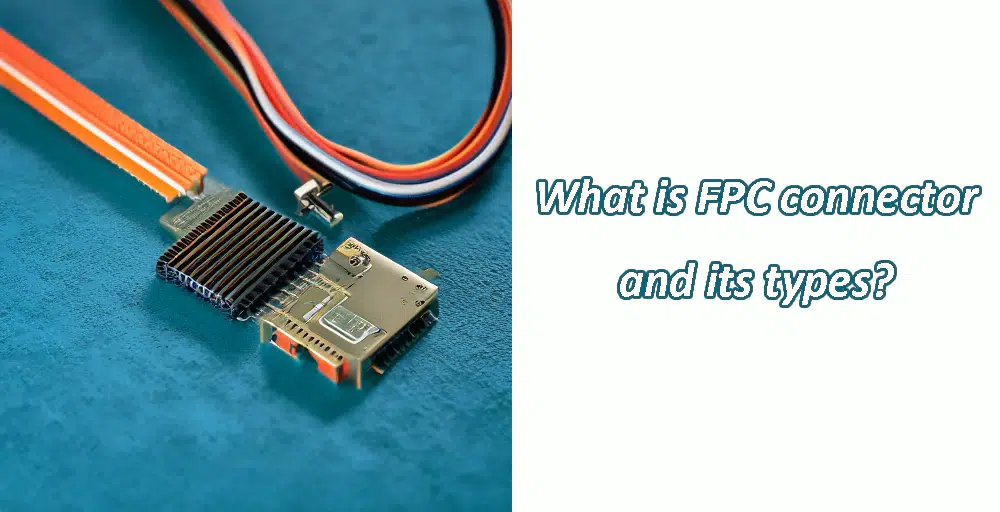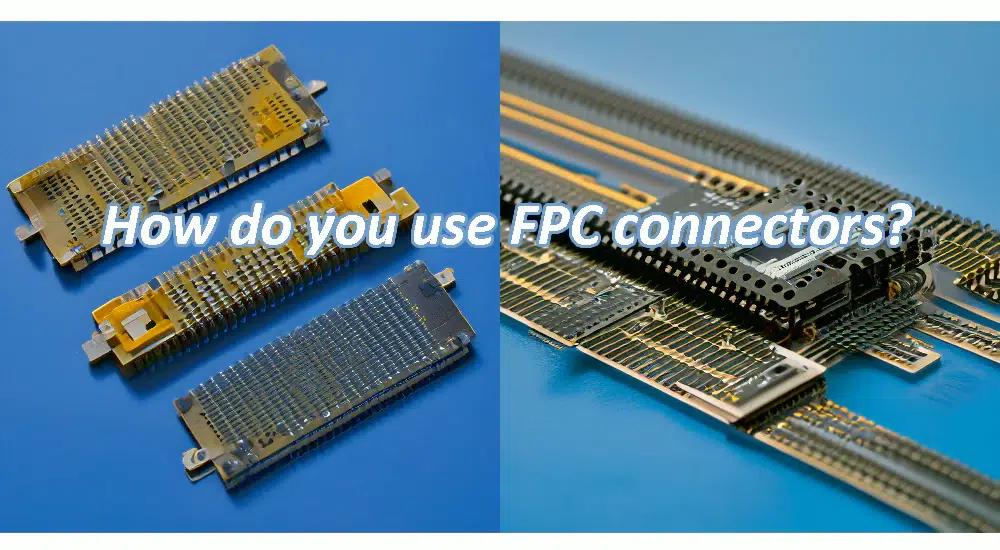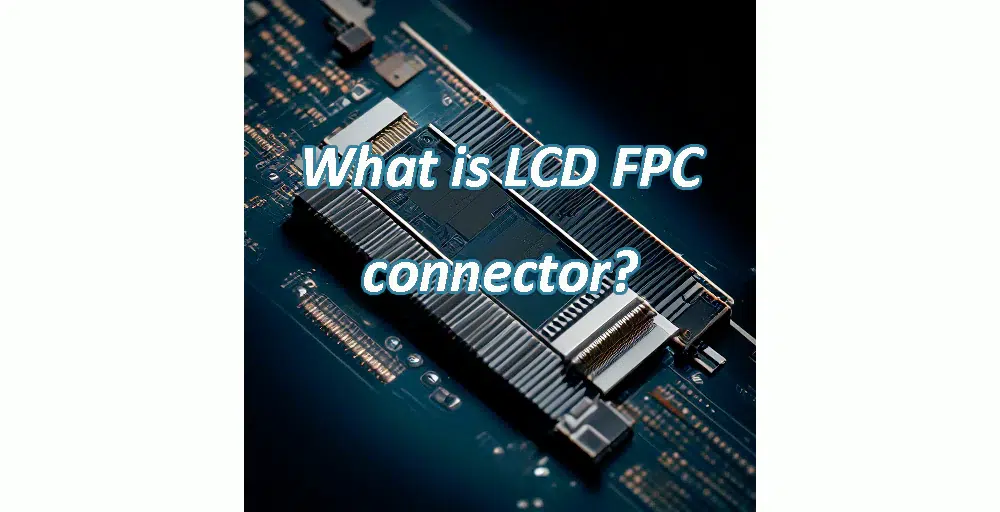FPC connectors, short for Flexible Printed Circuit Board Connectors, are connectors based on flexible printed circuit boards (FPCs). Due to their excellent flexibility, versatility, and foldability, these connectors have found widespread applications in modern electronic devices. Comprised of metal terminals, connectors, and retainers, they achieve reliable connections with other electronic components. Their working principle relies on the connection between metal terminals and the metal contacts at the bottom of the circuit board, utilizing ZIF design to enhance connection reliability and lifespan. They are significantly utilized in fields such as smartphones, automotive electronics, and more.
FPC connectors, standing for Flexible Printed Circuit Board Connectors, are connectors based on flexible printed circuit boards (FPCs). These connectors have gained wide application in modern electronic devices due to their excellent flexibility, versatility, and foldability. This article delves into the structure and principles of FPC connectors to provide a better understanding of their working principles and application scenarios.
What is FPC connector?
A Flexible Printed Circuit (FPC) connector is a type of electrical connector used to connect flexible printed circuit boards (FPCBs) or flex circuits to other devices or circuits. FPC connectors are designed specifically for use with flexible circuits, which are thin, lightweight, and can be bent or twisted to fit into tight spaces or conform to complex shapes.
These connectors typically feature a series of contacts or pads that make electrical connections with the conductive traces on the flexible circuit when it is inserted or connected. FPC connectors come in various types and configurations, including board-to-board connectors, cable-to-board connectors, and cable-to-cable connectors.
What’s the type of FPC connector?
FPC connectors come in various types, each designed for specific applications and requirements. Some common types of FPC connectors include:
Board-to-Board Connectors: These connectors are used to connect two flexible printed circuit boards together. They typically feature a low-profile design and may have a zero insertion force (ZIF) or non-ZIF configuration.
Cable-to-Board Connectors: These connectors are used to connect a flexible printed circuit board to a rigid printed circuit board or another type of device. They may have a ZIF or non-ZIF configuration and are often used in applications where the flexibility of the FPC is necessary.
Cable-to-Cable Connectors: These connectors are used to connect two flexible cables together. They are often used in applications where a flexible connection is required, such as in portable electronics or automotive systems.
ZIF (Zero Insertion Force) Connectors: ZIF connectors allow for easy insertion and removal of the flexible circuit without applying any force to the contacts. This helps to prevent damage to the delicate conductive traces on the FPC.
Non-ZIF Connectors: Non-ZIF connectors require some force to insert and remove the flexible circuit. They are often used in applications where a more secure connection is required.
What is the basic structure of an FPC connector?
An FPC connector typically consists of three main parts: metal terminals, connectors, and retainers. Each of these parts plays a different role in achieving reliable connections between the FPC and other electronic components.
Metal terminals are crucial components for connecting the FPC to other electronic devices. These terminals are usually made of conductive alloy materials, possessing excellent conductivity and corrosion resistance. The shape and arrangement of the metal terminals directly impact the functionality and performance of the connector. Common metal terminal structures include pin-type, surface mount, and pressure contact types, chosen based on specific application scenarios and requirements.
Connectors serve as the interface between the connector and other devices. The design of connectors not only considers the stability and reliability of the connection but also takes into account the convenience of user operation. In practical applications, the plug-and-play performance of connectors directly affects the connector’s lifespan and maintenance costs.
The role of retainers is to support and secure the FPC, ensuring a stable connection. During the connection process, retainers effectively prevent the FPC from loosening or disengaging, thereby ensuring the stability and reliability of the connection.
How does an FPC connector work?
The working principle of an FPC connector primarily relies on the connection between its metal terminals and the metal contacts at the bottom of the circuit board. When the FPC connector is inserted into the corresponding slot, its metal terminals come into close contact with the metal contacts at the bottom of the circuit board, thus establishing electrical connection. This connection enables electrical signals to be transmitted between different boards, achieving interconnection of circuit boards.
Furthermore, FPC connectors typically employ a Zero Insertion Force (ZIF) design. This design allows electronic components to be inserted and removed with minimal force, reducing potential damage, and enhancing the reliability and lifespan of the connection.
In practical applications, FPC connectors are widely used in situations requiring flexible PCB connections due to their excellent flexibility, versatility, and foldability. For example, in mobile devices such as smartphones, tablets, FPC connectors are used to connect critical components such as displays and touchscreens, enabling the normal functioning of the devices. Additionally, in fields such as automotive electronics and medical devices, FPC connectors also play important roles.
In summary, FPC connectors provide reliable electrical connection solutions for modern electronic devices, owing to their unique structure and working principles. With the continuous progress of technology and the expanding applications, FPC connectors will demonstrate their unique advantages and value in more fields.
How do you use FPC connectors?
Using FPC connectors involves several steps to ensure a proper connection between the flexible printed circuit (FPC) and the other device or circuit. Here’s a general overview of how FPC connectors are typically used:
Preparation: Ensure that both the FPC and the connector are clean and free from any debris or contaminants that could interfere with the connection.
Alignment: Align the FPC with the connector, making sure that the conductive traces on the FPC line up correctly with the contacts or pads on the connector.
Insertion: Carefully insert the FPC into the connector, ensuring that it is inserted straight and evenly. Depending on the type of connector, you may need to apply gentle pressure to insert the FPC fully.
Locking: If the connector has a locking mechanism, such as a latch or screw, engage the locking mechanism to secure the FPC in place. This helps to prevent the FPC from becoming loose or dislodged during use.
Testing: After the FPC is connected, perform any necessary testing to ensure that the electrical connection is secure and functional. This may involve checking for continuity, signal integrity, or other electrical characteristics depending on the specific application.
Protection: Depending on the application, you may need to provide additional protection for the FPC and connector, such as by using strain relief components, protective covers, or encapsulation materials to prevent damage from environmental factors or mechanical stress.
Releasing: If the FPC needs to be removed from the connector, follow the reverse process, taking care to release any locking mechanisms and gently remove the FPC without applying excessive force.
What size are FPC connectors?
FPC connectors come in various sizes and form factors to accommodate different applications, space constraints, and requirements. The size of an FPC connector can vary depending on factors such as the number of contacts/pins, pitch (spacing between contacts), and overall dimensions. Here are some common sizes and form factors for FPC connectors:
Pitch: FPC connectors typically have pitches ranging from around 0.3mm to 2.54mm (0.012 inches to 0.1 inches). Smaller pitches allow for higher contact density and are commonly used in compact electronic devices.
Width: The width of FPC connectors can vary depending on the number of contacts and the specific design. Common widths range from a few millimeters to several centimeters.
Length: The length of an FPC connector depends on the number of contacts and the layout of the connector. FPC connectors can be relatively short for board-to-board connections or longer for cable-to-board or cable-to-cable connections.
Height: The height of an FPC connector refers to its profile or thickness. FPC connectors are designed to be low-profile to minimize the overall height of the connected components, especially in thin electronic devices.
Contact Size: The size of individual contacts or pins on an FPC connector can vary depending on the pitch and design. Contacts may be designed for surface mount or through-hole soldering, and their size can influence the overall size of the connector.
What is LCD FPC connector?
An LCD FPC (Flexible Printed Circuit) connector is a type of connector specifically designed to connect a flexible printed circuit (FPC) to the LCD (Liquid Crystal Display) panel in electronic devices such as smartphones, tablets, laptops, and other display devices.
LCD FPC connectors are essential components in these devices as they provide a reliable electrical connection between the flexible circuitry of the display panel and the device’s main circuit board or driver circuitry. This connection allows for the transmission of signals, including power, data, and control signals, between the LCD panel and the rest of the device.
These connectors are typically designed to accommodate the unique requirements of flexible printed circuits, which are thin, lightweight, and can be bent or twisted to fit into tight spaces or conform to complex shapes. LCD FPC connectors often feature a low-profile design to minimize the overall thickness of the device and may incorporate features such as zero insertion force (ZIF) mechanisms to facilitate easy insertion and removal of the flexible circuit.
LCD FPC connectors come in various sizes, configurations, and pin counts to accommodate different display resolutions, interface standards, and device form factors. They are crucial components in modern electronic devices with LCD displays, ensuring reliable performance and connectivity between the display panel and the device’s electronics.
Conclusion
In conclusion, FPC connectors, or Flexible Printed Circuit Board Connectors, represent a pivotal component in modern electronic devices. Their unique structure, which leverages flexible printed circuit boards, grants them remarkable flexibility, versatility, and foldability, enabling their widespread application across various industries. By facilitating reliable connections between electronic components through metal terminals and utilizing innovative designs such as ZIF, FPC connectors contribute significantly to the functionality and performance of devices like smartphones, automotive electronics, and more.
FPC connectors, standing for Flexible Printed Circuit Board Connectors, are connectors based on flexible printed circuit boards (FPCs). These connectors have gained wide application in modern electronic devices due to their excellent flexibility, versatility, and foldability.
Board-to-Board Connectors
Cable-to-Board Connectors
Cable-to-Cable Connectors
ZIF (Zero Insertion Force) Connectors
Non-ZIF Connectors
An FPC connector typically consists of three main parts: metal terminals, connectors, and retainers. Each of these parts plays a different role in achieving reliable connections between the FPC and other electronic components.













